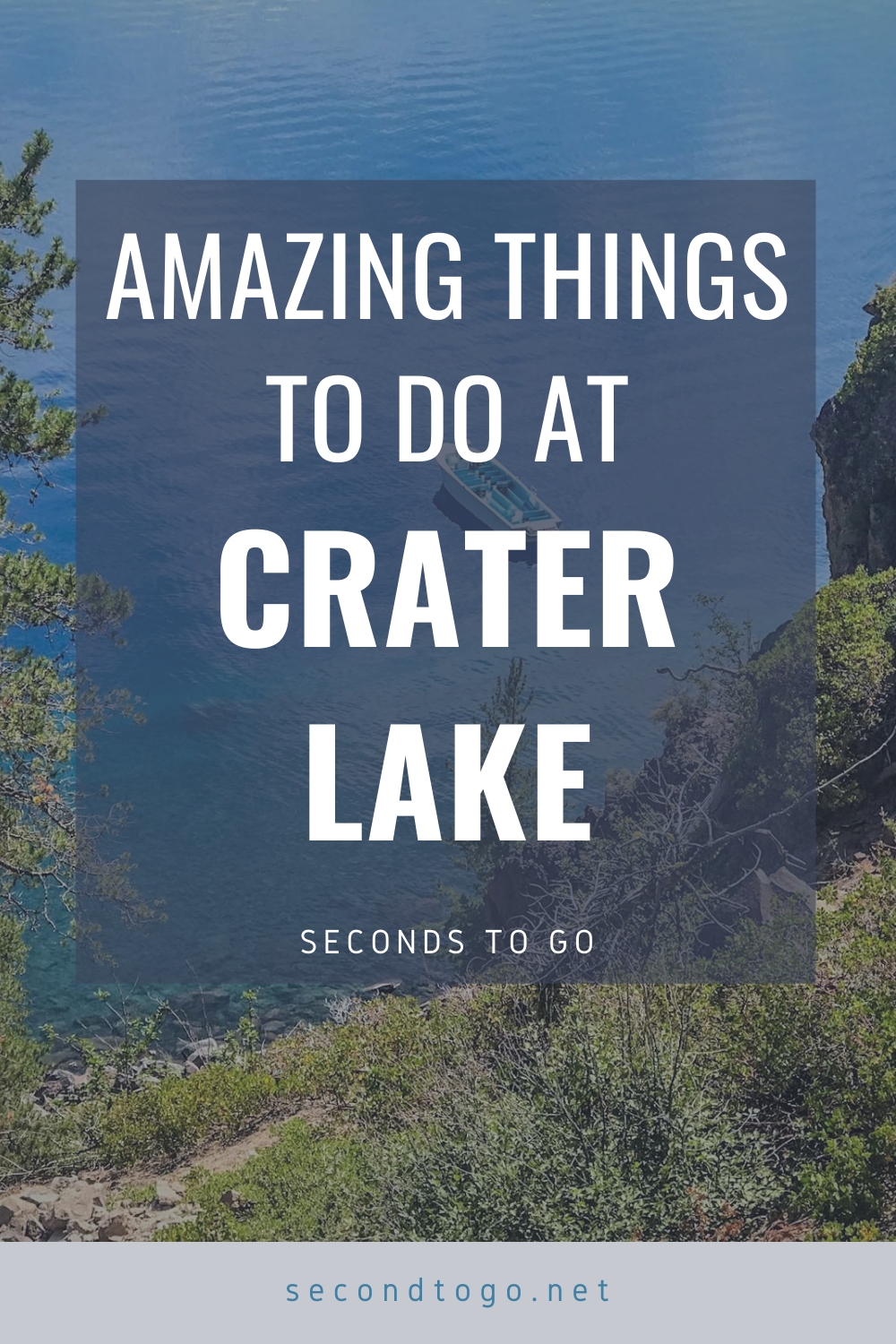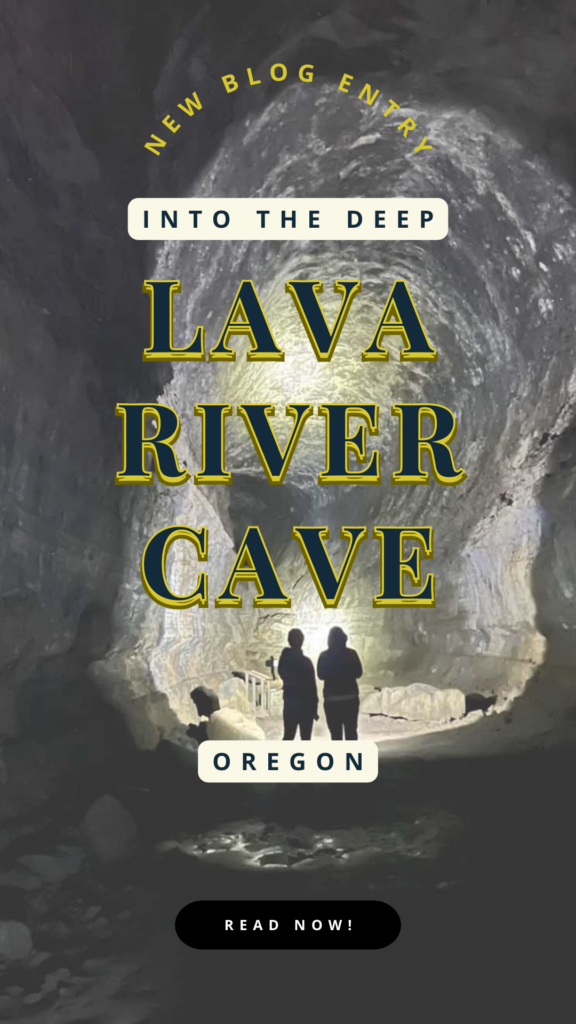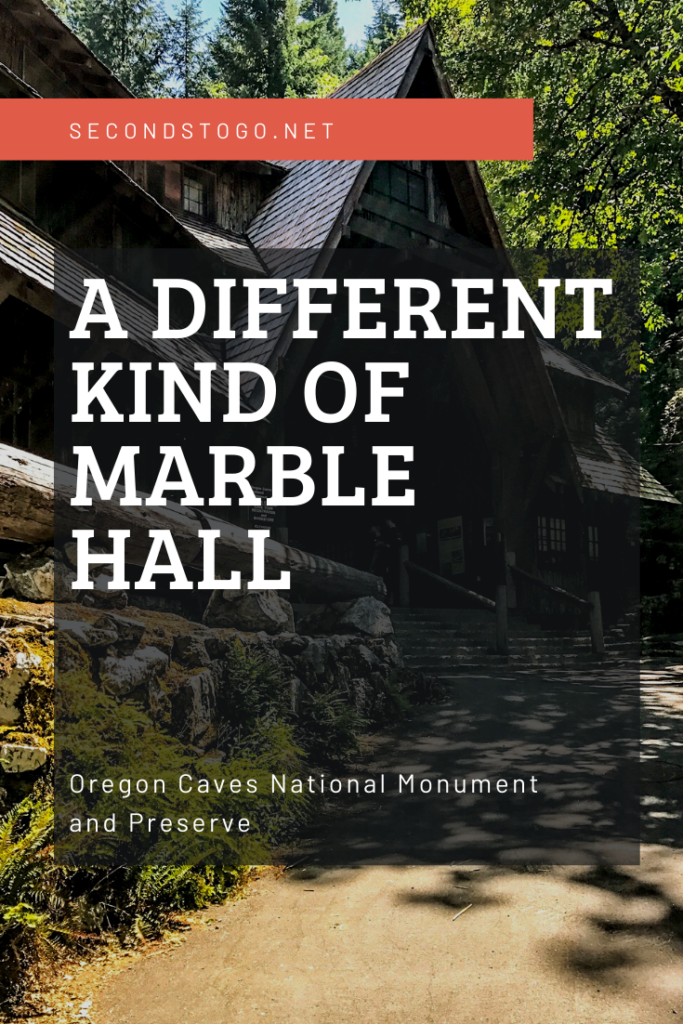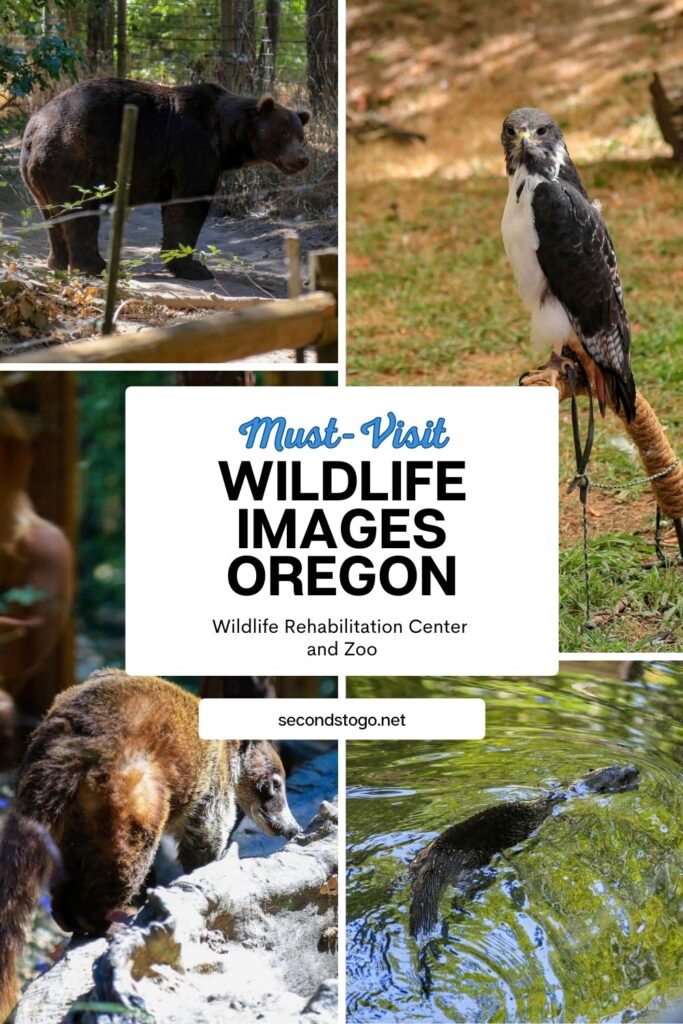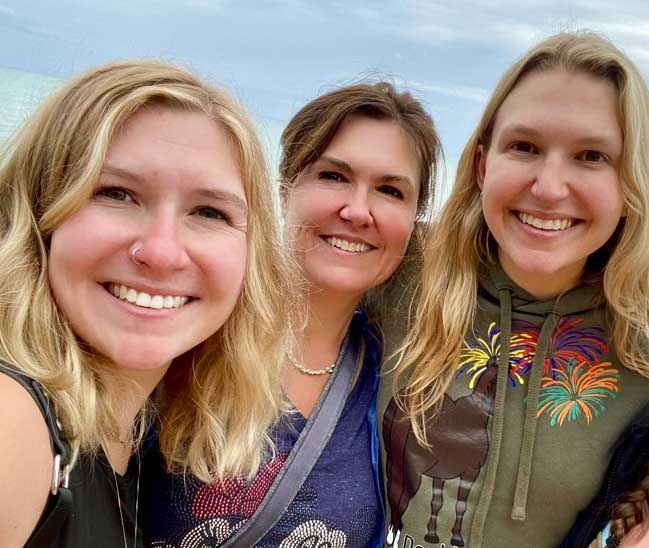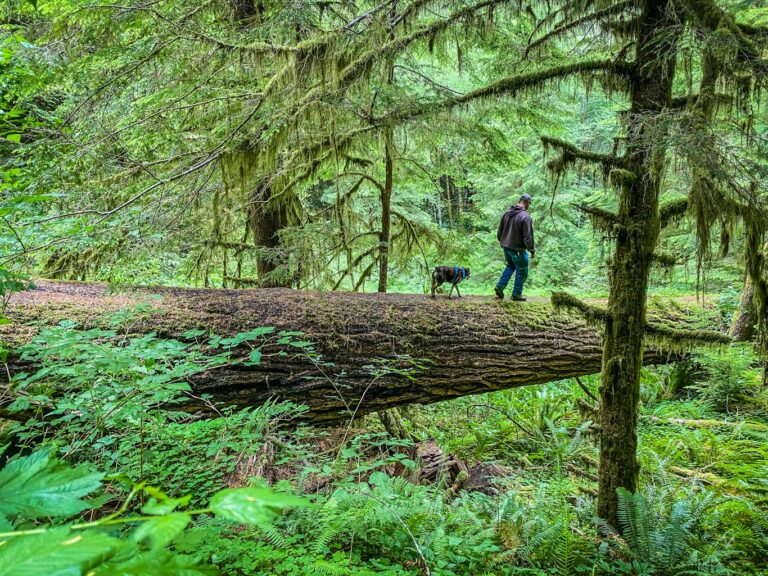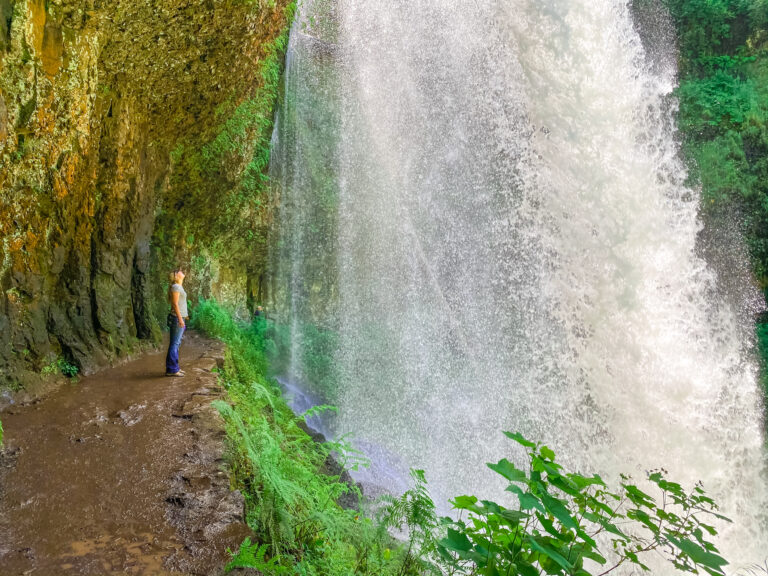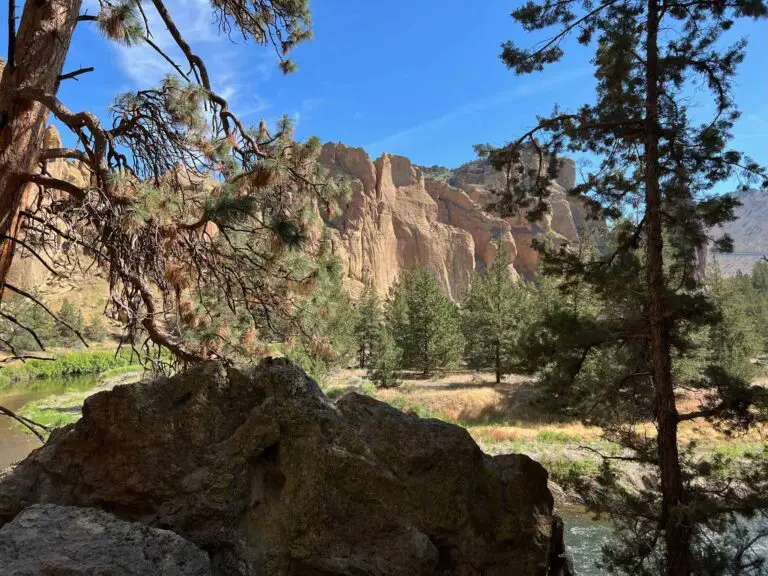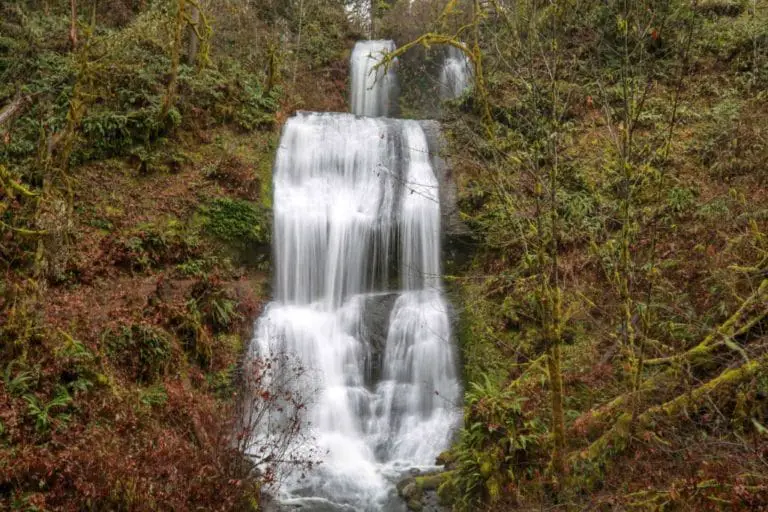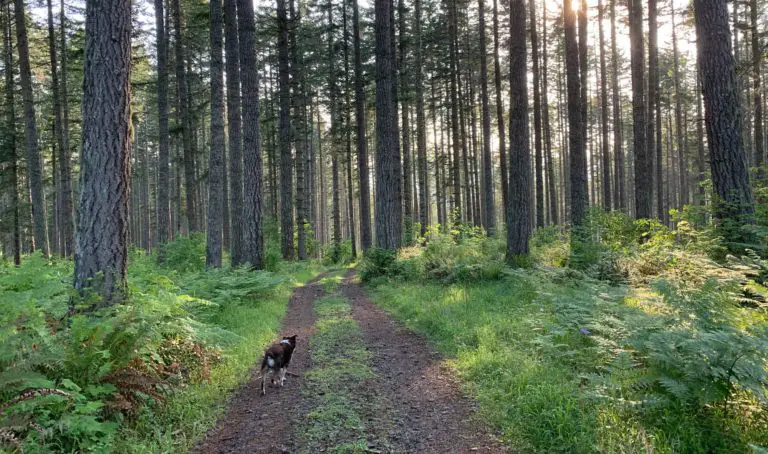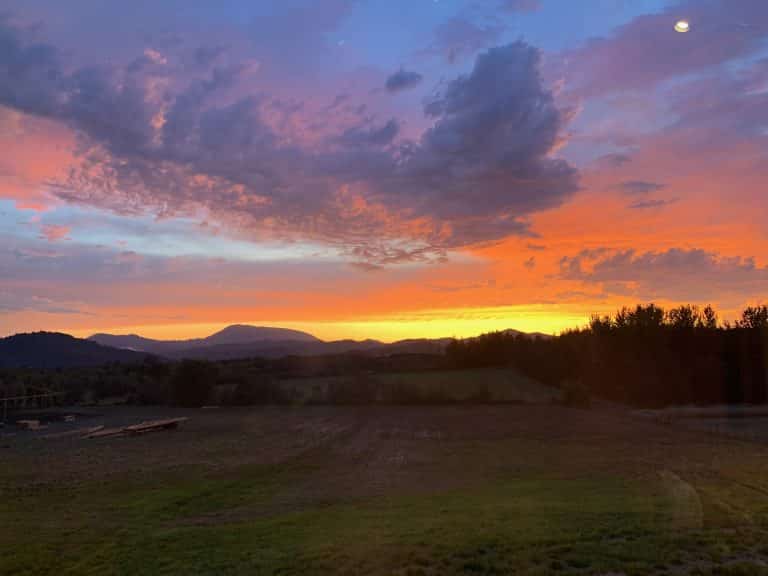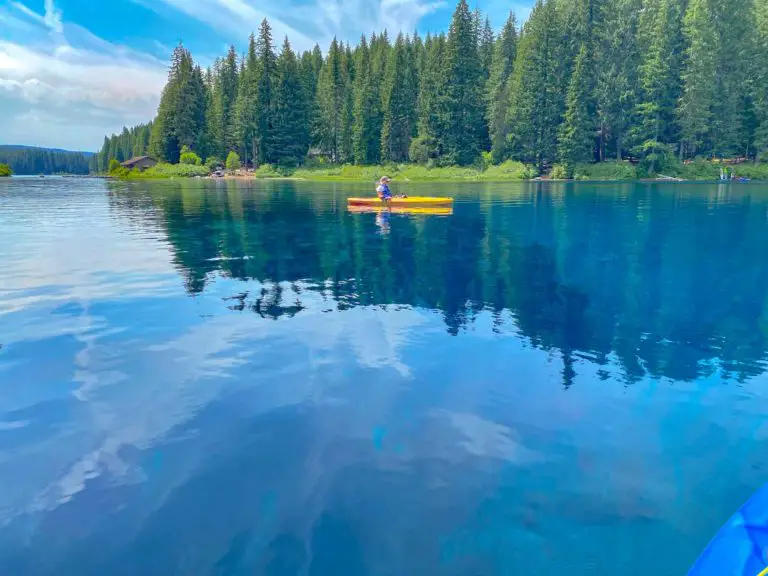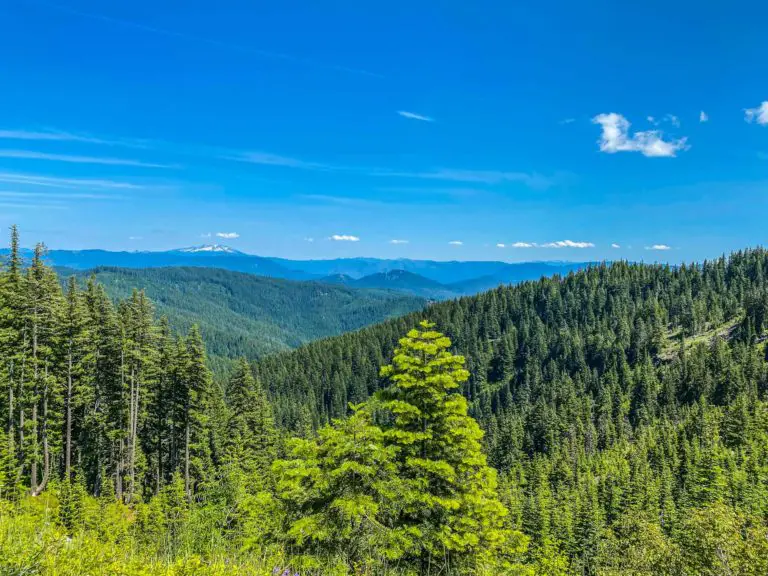Updated July 2024
When thinking about what to do at Crater Lake, many people go right to the pristine, blue water of the lake itself, but the over 180,000-acre park has much more to offer. With historic lodges, dining, sightseeing drives and endless hiking trails, Crater Lake National park is an experience, not just a destination.
Table of Contents
How Crater Lake National Park Came to Be – Crater Lake History
Way back in 1902, Crater Lake National Park was established as the fifth National park in the country. It was (and still is) the only National Park located in the remarkable state of Oregon. However, long before the park was established, a volcano was busy reshaping the landscape.
Hundreds of thousands of years ago volcanoes were forming what is now the Cascade Mountain range, including Mount Mazama. Over the years the volcanoes created flows of lava which formed the mountains. During a large eruption, Mount Mazama, partially collapsed and formed a caldera, which eventually developed into what we now know as Crater Lake.
In the late 1800’s, a man named William Gladstone Steel developed an obsession with the deep blue water of the lake and its mysteries. He organized a group to study the lake and was the first to measure the depth of the water.
Steel named many of the park’s current landmarks and was instrumental in bringing fame to the lake. By 1913, construction had begun on Rim Road, the early road around the lake. Crews of hard-working men, horses, and large steam shovels worked tirelessly to build a 12-foot-wide road around the entire rim of the caldera overlooking the lake.
Throughout the 1920’s, tourists were driving along the hazardous Rim Road in large numbers. The road was uneven, narrow, and so dusty it could become hard to see oncoming cars. Rim Road took drivers through sharp turns and featured no turnouts to pass for stop for viewing. As a result, drivers pulled off wherever they saw fit, destroying many plants and ecosystems as well as causing accidents.
By 1931, it was obvious a new road was needed. Rim Drive replaced Rim Road and featured a wider safer roadway and official turnouts for passing and sightseeing.
What to Do at Crater Lake: Rim Drive
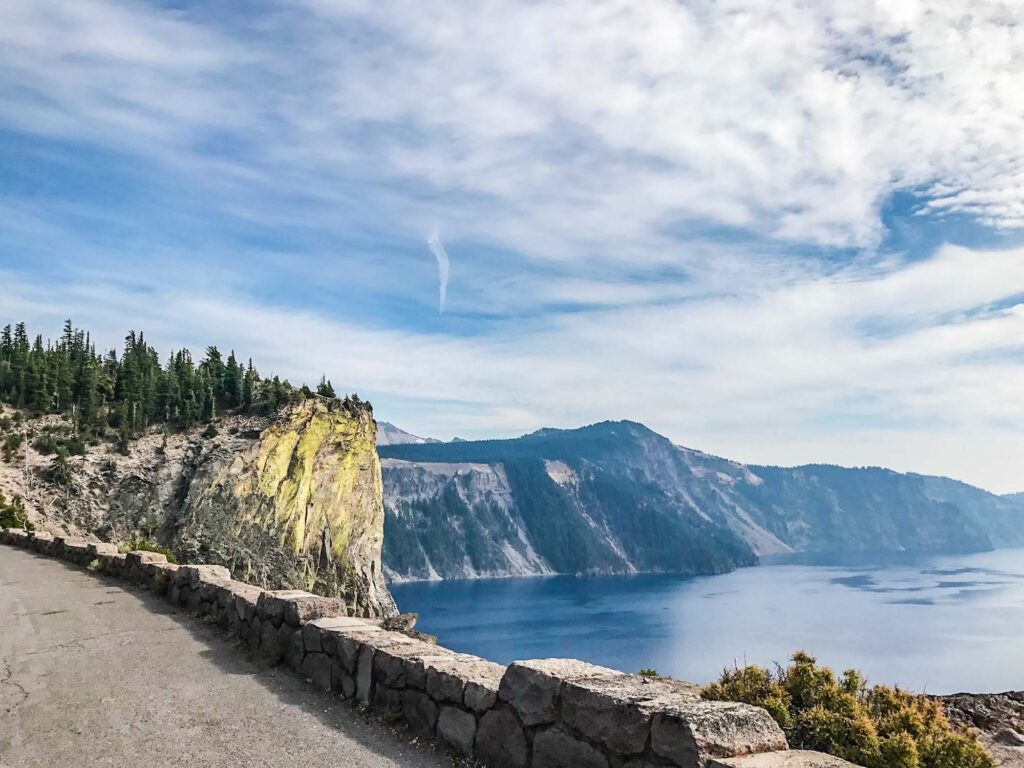
Rim Drive has long been one of the best things to do at Crater Lake National Park, and always has been the best way to see the lake without hiking.
If you are wondering what to do at crater lake in just one day, the Rim Drive is a great option. It offers 33 miles of lake views, as well as forested areas, lava rocks, and depending on the time of year, snow.
Rim Drive quite literally follows along the rim of the caldera which formed Crater Lake. By following the roadway, you’ll experience many different views of the lake from the 30 different overlooks.
Each viewpoint features plaques explaining the geological history of the lake, as well as scientific facts, and human history at the lake. Some of the signs point out formations that can be seen from each viewpoint.
One of the unique experiences at Crater Lake National Park, is the Rim Trolley Tour. The Crater Lake trolley tour follows the rim drive, stopping for a greater view of at least five of the overlooks. A park ranger will act as your tour guide explaining what you are seeing from the trolley and provide additional park history.
If you’re wondering what to do at Crater Lake, the Trolley tour is an unforgettable experience. It lasts two hours and begins at the park visitor center. Check the trolley service website for the current tour dates and times.
Rim Drive is open July through October with some closures depending on weather at Crater Lake as well as special events. The road is open to all vehicles, but it is recommended that tow behinds be left at the Steel Visitors Center, Cleetwood Cove, or at one of the snow parks outside the confines of the park. Navigating the road and turnouts with a trailer in tow may be a challenge.
The road has many twists and curves, is narrow, features no shoulder, and parking at some of the turnouts can be limited. Rim Drive shares the road with many bicyclists and has a maximum speed limit of 35 miles per hour.
The road is closed typically twice a year for the Ride the Rim event. Ride the Rim opens up Rim Drive to bicyclists only on certain days of the years. On these days no motorized vehicles are permitted on the road, so you will want to check for closures before planning a visit.

Best Things to Do at Crater Lake Rim Village
One of the first things to do at Crater Lake is to stop by a visitor’s center. The first visitor’s center at Crater Lake is located at the park headquarters near the southern entrance to the park on the Volcanic Legacy Scenic Byway. This is the Steel visitors center and has park rangers available to answer any questions about the park itself or the geological history. This visitor center also shows a 22-minute film outlining Crater Lake’s entire history. This visitor center does close in later September.
The Rim Village, the lake’s second visitor’s center. When thinking about what to do at Crater Lake, Rim Village is a must do. Rim Village is the official gathering place for park services inside Crater Lake National Park. You can sign up for Crater Lake trolley rides, boat rides and other experiences within the park by making a stop here. However, the area offers more than just a gathering spot.
The history of Crater Lake Rim Village began between 1909 and 1915 with the construction of Crater Lake Lodge. The lodge was built on the edge of the caldera and offers breathtaking lake and panoramic views.
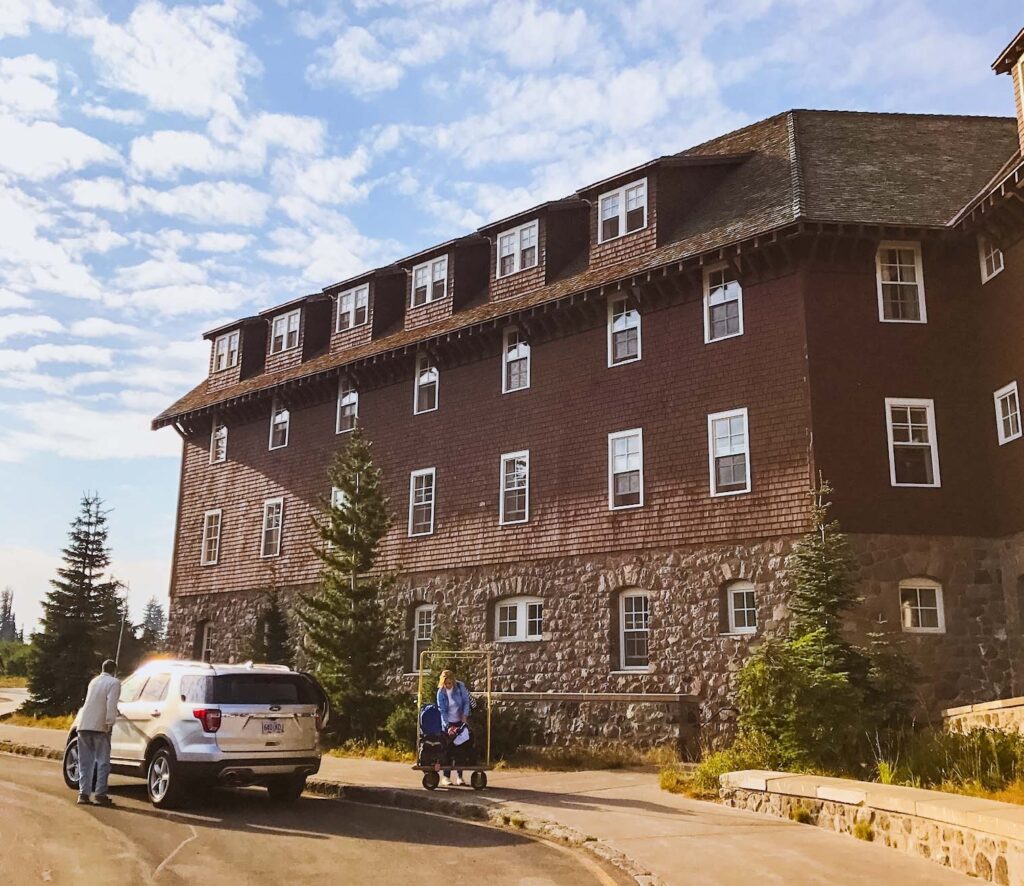
In 1927, Congress allocated money for the building of the official Rim Village surrounding the Crater Lake lodge. Between 1927 and 1941, many construction projects were completed at the village, and today, not much has changed.
The additions included new roads, walking and hiking paths, an observation area for viewing the lake, a cafeteria, general store, housekeeping cabins, picnic areas, and landscaping. It’s also one of the few places where camping is allowed at Crater Lake. The Historic Rim Village is now on the list of National register of Historic Places due to its unique architecture and significance in the development of Crater Lake National Park.
Today, if you need to know what to do at Crater Lake, Rim village offers, dining, shopping, easily navigable pathways along the rim and many lookouts and observation areas. One of the pathways leads to the Garfield Peak Trailhead. The hike here is relatively short, but steep and takes you to the top of Garfield Peak and offers ever increasingly stunning views as you climb your way up. If you only have time for one hike at Crater Lake, this is a great one.
Cleetwood Cove Trail: Hiking to the Bottom of the Lake
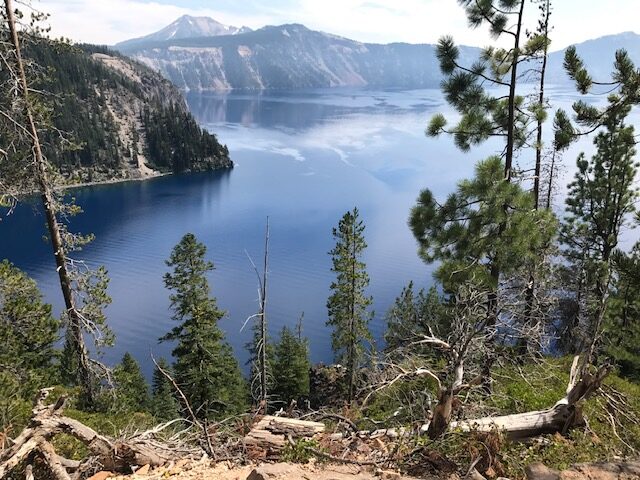
The Cleetwood cove trail is by far the most popular must-do hikes inside Crater Lake National Park. If you’re deciding what to do at Crater Lake, be sure to add this trail to your list.
The Cleetwood Cove trail is the only trail that leads down to the bottom of the lake and ends at its pristine shores. As you descend the trail and wind your way through the switchbacks, the lake views become better and better, and the lake seems to become bluer and bluer.
Once at the bottom you can sit calmly on the shores and enjoy the views, take a dip in the crystal clear, but cold water, try your hand at catching some fish, or join the daredevils by jumping off the rocks into the water.
There is a vault toilet at the end of the trail, but the lines are often long, and it is not the cleanest. There is also a building where guests embarking on a Crater Lake boat tour (discussed in more detail later.)
Before heading down the Cleetwood Cove trail, there are some things to keep in mind, specifically for safety. The trail itself is steep and features many switchbacks. The footing is crushed volcanic rock that can be slippery when it is dried out, so good shoes are a must, not flip flops or water shoes.
Another thing to consider is hiking back up the trail. The 1-mile trail is easy on the way down, but strenuous on the way up. The trail has shade in some of the upper parts, but most of it is unshaded, and can be very warm in the summer.
We recommend taking lots of breaks as you ascend the steep trail. Benches have been thoughtfully place specifically for this purpose. Also be sure to bring plenty of water to keep yourself hydrated. There are no places to access drinking water on the Cleetwood Cove trail. Snacks, sunscreen, and even walking sticks are also recommended for the Cleetwood Cove Trail.
Opening of the trail depends on weather and varies each year based on the trail and road conditions. Be sure to check real-time trail and road conditions before heading out.
Pets are not allowed on any part of the Cleetwood Cove trail and leaving pets inside your car could result in legal actions depending on the weather.
What to Do at Crater Lake: Boat Tours

Guests agree that one of the best things to do at Crater Lake is the boat tour. Boat tours at Crater Lake are the only way to visit Wizard Island, a 763-foot cinder cone created as the Crater Lake caldera filled with water.
During the peak summer season, multiple boat tours are offered per day. The standard boat tour lasts 2 hours and circles the lake while traveling close to Wizard Island as well as the other natural formations, such as the Old Man of the Lake, a severed tree that broke from its roots more than a century ago and continues to travel the lake standing upright.
Three different boat tours are available through Crater Lake Hospitality:
- Standard Lake Cruise: Throughout the 2-hour tour, a park ranger will offer details and information about the lake, formations and more. These tours run from July to September, with updated tour dates and times found here. Guides will cruise around Wizard Island and give you an up close view of Phantom Ship as well as other natural formations.
- Wizard Island Tour: If you want a sampling of the history and time to actually explore Wizard Island, one of the best things to do at Crate Lake is the Wizard Island tour. A boat will cruise the perimeter of the lake before dropping you on Wizard Island. Here, you can hike, swim or just soak in the view.
- If you aren’t interested in spending time in a boat but want to visit Wizard Island, then the Wizard Island Shuttle is the perfect boat tour for you. This trip skips the cruise and takes you directly to the island where you can hike the path to the 90-foot deep crater at the summit.
The Wizard Island boat tour itself lasts about five hours. Two hours are spent much like the standard tour, circling the lake and learning about the lake’s history and formations from a park ranger.
The remaining three hours are yours to use to explore Wizard Island. On the island, hike, swim, wade and fish without the constant crowds at the shores of the Cleetwood Cove trail.
To participate in any of the boat tours, you must be able to descend and ascend the Cleetwood Cove trail on your own in order to reach the boat dock. The boats are open air, and passengers will be exposed to the elements including strong sun, so be sure to plan accordingly. There are also no restrooms on the boats or on the island.
Tickets can be purchased in advance online or at the Mazama Village Registration Desk, Crater Lake Lodge Front Desk or at the Cleetwood Cove Kiosk at the bottom of the lake up to 2 hours prior to departure.
What to Do at Crater Lake: Off the Beaten Path
Exploring some of the lesser visited attractions at Crater Lake is a great way to lose yourself in the beauty of the park and to enjoy some of the more unusual elements within the bounds.
The Pinnacle Trail: Spires Reaching for the Sky
Off of Rim drive, opposite the Phantom Ship Overlook, is Pinnacles Road. Pinnacle Drive travels six miles past the Vidae Falls Trailhead, the Lost Creek Campground and Greyback Drive before ending at the trailhead for one of the most unique sites at Crater Lake National Park
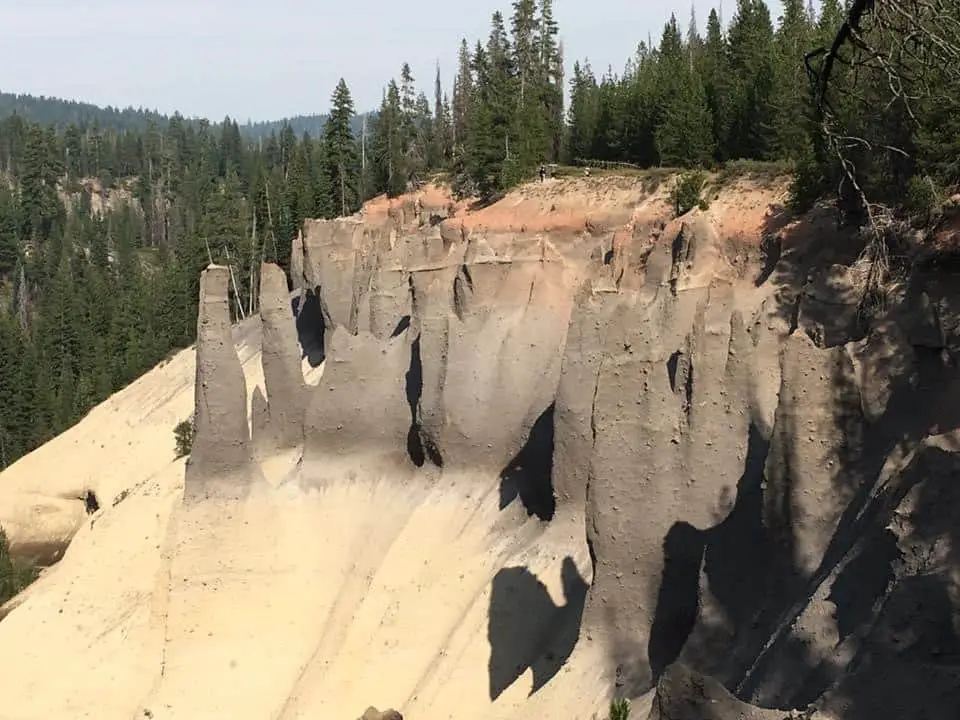
Actually, one might argue that the Pinnacles are one of the most interesting and unique rock formations in the western United States. They are a must when thinking about what to do at Crater Lake.
The Pinnacles are tall, thin spires that seem to be magically growing towards the sky and ending in a deadly point. They have been formed over many years by Wheeler Creek.
These fossil fumaroles seem to grow out of the cliffside, with no vegetation directly around them. The rock towers are made of volcanic rock and ash from ancient eruptions, similar to those that were involved in the formation of Crater Lake.
The Pinnacle hike takes you along the rim of the canyon and gives close up views of the pinnacles from above and the side. The Pinnacles walking trail is flat and a half mile out one way, one mile total. It is an easy simple trail, the perfect way to end the day.
Cycling at Crater Lake
If you love cycling and are wondering what to do at Crater Lake, there are many options. Cyclists love the experience of riding their bicycle on the 30+ miles of Rim Drive for the spectacular views and physical challenge. On this road cyclists are required to follow all safety rules pertaining to cars. They are also encouraged to stay alert as there are no shoulders along this twisting and often narrow roadway.
Along with Rim Drive, avid cyclists can go off road at Grayback Drive. Grayback Drive is an unpaved more private experience. This roadway is vehicle free and about eight miles long.
For two days each year, Rim Drive is closed to all motor vehicles, so cyclists can enjoy riding the caldera rim without the hassle of cars and large vehicles being in their way.
Camping at Crater Lake
Crater Lake has two campgrounds, Mazama Campgrounds and Lost Creek Campgrounds. Mazama Campground offers a more high-end camping experience. It has spots for tents, RV’s and camper trailers.
Mazama features 214 camp sites, and some of them have RV hookups. This campground also has a store which sells supplies, water stations, hot showers, washing machines, and a free RV dump station. Each individual campsite has a fire ring, picnic area, and a bear resistant food storage box.
Pets are allowed at Mazama Campground, as long as these rules are followed.
If you’re looking for more adventurous things to do at Crater Lake, try this next campground. The Lost Creek Campground is a private, more primitive camping site. It has only 16 spots for tents and they are first come first serve. Each site has a picnic table and bear resistant food box.
The Lost Creek Campground has vault toilets only, and no water sources. Pet are allowed but no RVs or trailers of any kind are permitted.
There is one more camping option for Crater Lake, but it is for those who are more adventurous than most. Backcountry camping is permitted in the park. With over 90 miles of trails to explore, back country camping is a great way to get up close and personal with the terrain and landscapes of the park.
Unlike the campgrounds, back country camping can be accessed year round, if you are hearty enough. Permits must be obtained at one of the park headquarters before setting out and are free.
Winters in Crater Lake
If you are planning to visit during the intense winter months, you are going to need to know what to do at Crater Lake in the cold. Winter activities include snow sports, camping, and snowmobiling.
Sightseeing can be challenging during the winter months. Crater Lake receives an average of 43 feet of snow per year. This snow can close roads, and even when the roads are open, the lake is obscured by clouds about half of the winter season.
Guided snowshoe walks are offered on weekends and holidays throughout the winter and begin at Rim Village. A ranger will guide you and the group 1-2 miles across the rim of the lake. To attend, the tour is free, but participants must be at least eight years old and in good physical condition and be dressed for the weather.
Sledding, skiing, and snowboarding are permitted inside the park, just not on the caldera. Crater Lake National Park has no chair lifts so you must be able to walk back up to where you began. These activities are allowed but can be very dangerous.
Cross Country skiing is a much safer option if you’re looking for what to do at Crater Lake in the winter. There are many cross-country skiing routes through the trees as well as along the western portion of Rim Drive which will take you to areas overlooking the lake. Ski rentals are not available inside the park, and the trails are not groomed.
If you’re visiting Oregon, Crater Lake National Park is a bucket list destination. Most activities offer stunning views, while some test your physical strength and stamina. Crater lake offers adventures for all, in all types of weather.
Frequently Asked Questions: Crater Lake
Where is Crater Lake Located?
Crater Lake is located in Klamath County,Oregon, 80 miles northeast of Medford. The Nearest towns are Union Creek and Fort Klamath which are both 25 minutes away and Prospect, Oregon, which is almost 40 minutes away.
What is the Weather at Crater Lake?
The weather at Crater Lake varies massively depending on the time of year you visit. In the Winter, you can expect cold temperatures and lots of snow. They get about 40 feet of snow per year. Winter temps range from high teens to mid thirties.
Summer in Crater Lake brings warmer weather with temperatures dropping as low as the low forties at night, and up to as high as 70 degrees during the day. June, July, August and September are the warmest months, and the months you are least likely to see snow.
What Hotels are Near Crater Lake?
Crater Lake Lodge- This lodge is located directly in the park and is a beautiful and historic building. The lodge overlooks the rim and offers direct views of the lake. There is a restaurant inside the lodge, but no phones and no televisions. Wifi is available, but is slow. Room rates and availability can be found here.
Cabins in Mazama Village- The Cabins are located in Mazama Village inside Crater Lake and offer either one queen bed, or two. They are quiet and serene. Close dining options are inside Mazama Village. Rooms can be booked here.
Union Creek Resort- Located in Union Creek about 25 minutes from Crater Lake Entrance. The town of Union Creek is very small but does have one restaurant. Learn more here.
Aspen Inn- Located in Fort Klamath, Aspen Inn is 25 minutes from Crater Lake. Aspen inn is even pet friendly. You can learn more and book here.
Crater Lake Resort- is also in Fort Klamath, and has cabins, tent sites, glamping, and RV sites. It is about 25 minutes from Crater Lake’s entrance.
Further from Crater Lake, there are many hotels within an hour of the park.
How Deep is Crater Lake?
Crater lake is 1,949 ft deep. With a surface area of just over 20 square miles.
What is the Water Temperature of Crater Lake?
Surface lake temperatures vary from 32 degrees to 66 degrees, with average summer temperatures being between 50 and 60 degrees. The deeper the depth of the water, the colder the temperature though.
Have there been any deaths at Crater Lake?
The short answer is yes, many. With dangerous cliffs, deep winter snow, and large swings in temperature, Crater Lake is very dangerous.
Some examples are:
In January of 1975, Charles McCullar hitch hiked to Crater Lake to take snow photos of the lake. He never returned. Soon, the FBI and Charles’ father began an extensive search. Sadly, Charles’ body was found a year later, seemingly having been dragged by a wild animal. It is thought he got lost in the deep snow and died of hypothermia.
On September 11, 1996, a young lodge employee named Kristen fell off of the cliff at MT, Thielsen. Unfortunately she did not survive the fall, but her body was located.
In 1990, a mother fell to her death at Discovery Point after walking past the warning signs to get a better view of Wizard Island. She was holding her daughter at the time but managed to toss her out of her arms to safety before the fall.
While beautiful, it is very important to remember that Crater Lake is a dangerous place to visit. It is imperative to follow all warning signs and to stay on all trails.
How much is the entrance fee to Crater Lake National Park?
The entrance fees depend on the time of year and the vehicle. During summer, passenger vehicles are $30, and in the winter, $20. Motorcycle entrance is $25 in the summer, and $15 in the winter. Bicycles and pedestrians pay $15 per person. Snowmobiles may enter the park for a fee of $15 each November 1 through June 15.
Each pass lasts for seven days. Commercial vehicles are subject to different rates, and annual passes are available.
Which entrance should I take to Crater Lake?
Crater Lake has three entrances, North, South and west.
The North Entrance is only open in fair weather, during snowfall, the North Entrance road becomes a snowmobile trail. The North entrance is the easiest to access from the north, and is a straight shot east from Roseburg.
The South and West entrances are accessed via Highway 62 (Crater Lake Highway, and are open year round. They are the most direct route to Mazama Village, the visitor’s center, and the Crater Lake Lodge.

Location
Crater Lake Oregon

Trip Length
1/2 day to 2 days

Things to Do Nearby
Crater Lake Lodge- inside the park
It’s a Different Kind of Marble Hall at Oregon Caves National Monument and Preserve
Other Trips You Might Enjoy
